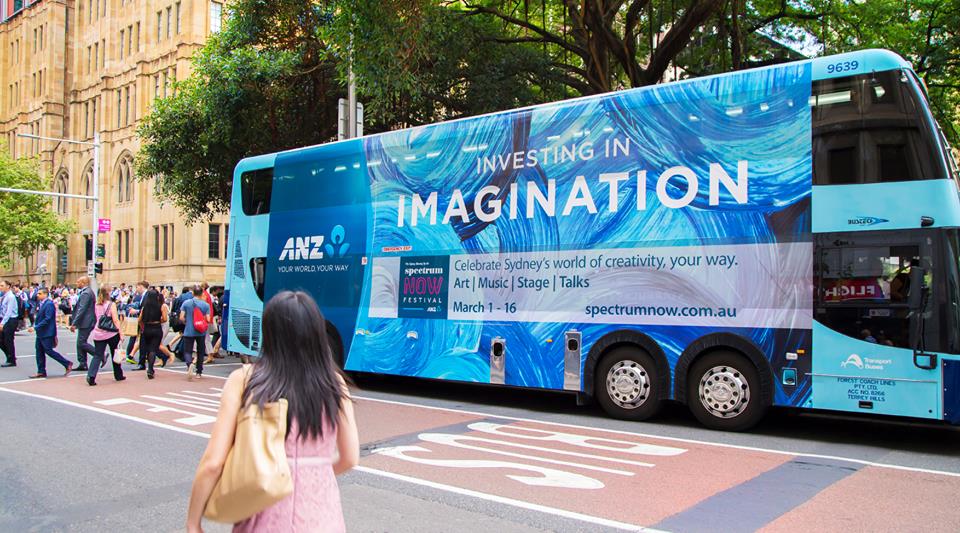Triggering Innovation & The Permission To Imagine
Many leaders and even people, in general, believe that imagination is not valuable enough to consider or support when it comes to usual daily activities such as problem-solving. But did you know that ‘imagination’ is something we can all cultivate? In fact - it is a brain process that we as humans possess, even if you believe you don't have an ‘imaginative’ bone in your body!
Luckily, everyone doesn’t feel this way, and some organisations take imagination, creativity and innovation to an entirely new level. In my last trip to London, I had the opportunity to interview Ms. Misti Melville, HR Director for Buro Happold.
This incredible engineering firm specialises in kinetic architecture. They have built masterpieces around the world, designing structures that allow movement without compromising the overall structural integrity.
Some of their projects include the Atlanta Falcons football stadium, which features a retractable ‘rose-petal’ roof, and the Louvre Abu Dhabi Museum. The museum initially challenged the imagination of engineers and designers who had to plan its construction carefully on what was originally a giant dry rock. They had to imagine inside their minds what was not yet visible on the outside.
Imagining is seeing inside your mind what’s not yet visible on the outside.
Silvia Damiano
The reality is that we imagine things even when we do not think we are imagining. It is a process we cannot stop because it naturally happens in our brain every time the ‘default’ or ‘imagination’ network becomes active. When we imagine, we turn on the same neural pathways as if we had the real experience.
The brain processes involved in imagination, however, have not been well understood until recently. Several studies, including one from researcher Alex Schlegel from Dartmouth College in New Hampshire, have helped unravel the mysteries of imagination.
Schlegel found that the activity of what we call ‘imagination’ is the product of a widespread network of neurons that consciously alters and manipulates images, symbols and ideas. Neuroscientists refer to this as the ‘mental workspace’, and it provides the intense mental focus needed to come up with new ideas and solutions to complex problems. Elite athletes are usually taught to imagine what it would look like to achieve the goal they want. This visualisation helps them to be better prepared to face a challenge.
In business, however, we stumble and struggle in many situations, including negotiating with a client, giving feedback to a team member or presenting in public. It is rare to see people allotting the time to prepare themselves and practise imagining possible scenarios.
If you think about it, every achievement in human history, from amazing buildings, battles won or scientific discoveries, started in the thoughts of someone who dared to imagine what could be possible and had the courage to implement it.
In my work, I notice that many people are afraid of letting their imagination go wild because they worry too much about how they are going to make it happen. People immediately build barriers, and they give up before they even start.
It is impossible to act on your imagination when you are afraid of failing, of standing out, speaking up or being wrong.
Therese Rein
Developing the ability to imagine the future is critical in triggering innovation in business. We are living in an era of ideas, and we need to bring back creative thinking to the workplace. To bring imagination back, we must change the value that we assign to the power of imagination and encourage policies that can help people unlock their imaginative potential.
Business leaders need to practise imagination themselves and talk about it openly, so others feel free to do the same. People we consider to be geniuses, including Leonardo da Vinci, Albert Einstein, Michelangelo, Thomas Jefferson, William Shakespeare, Mozart, Pascal, Charles Darwin and more modern examples such as Bill Gates, Steve Jobs and Steven Spielberg would never have become notable without the ability to use this higher intelligence.
At the About my Brain Institute, we believe anyone can become a more imaginative leader. In our  Programs we provide effective strategies & tools for people to awaken this ability at work and in life, which in turn, will result in higher levels of innovation.
Programs we provide effective strategies & tools for people to awaken this ability at work and in life, which in turn, will result in higher levels of innovation.
Your world will change when you activate your imagination! If you are not yet convinced, I have outlined four reasons that you may want to consider:
4 Reasons to Activate
“The Power Of Your Imagination”
Reason No. 1
IMPLEMENTATION HAS A HIGHER RATE OF SUCCESS
We do not implement everything we imagine, but we are more motivated to apply what our imagination has produced when the ideas emerge from our brains, rather that when we try to follow someone else’s thoughts. Without motivation and drive, imagination merely becomes a pleasurable mental activity.
It doesn’t mean that another person’s imagination cannot inspire us or that we wouldn’t be willing to participate in what they propose. Rather, our own imagination allows us to dig deeper into the networks and mysteries of what is possible, which can create a very engaging and interesting existence.
REASON NO. 2
IMAGINING HELPS US BECOME UNSTUCK
You may have noticed that your best creative moments happen in the shower, or perhaps while walking in nature or driving a car. Wherever they take place, these are powerful moments that you can harness to help you find the right solution to a problem you may be facing.
The next time you feel stressed or overwhelmed, stop what you are doing and walk away. You will be helping your brain get into a more relaxed state, activating the imagination network mentioned above.
REASON NO. 3
IMAGINATION CAN MINIMISE CONFLICT IN A TEAM SITUATION
As John Lennon suggested in his famous song, Imagine, many issues could disappear, and a new viewpoint could emerge if we would only close our eyes and transport ourselves mentally to the world of possibilities.
Learning to do this with a group of trusted collaborators can certainly make everyone more amicable, diminishing tension or harsh reactions. This strategy could potentially encourage everyone to gain a different perspective on the matter.
Imagine there’s no countries
It isn’t hard to do
Nothing to kill or die for
And no religion, too
Imagine all the people
Living life in peace… You…
You may say I’m a dreamer
But I’m not the only one
I hope someday you’ll join us
And the world will be as oneJohn Lennon
REASON NO. 4
IMAGINATION CAN GET US CLOSER TO WHAT WE WANT
Our desires, dreams and wishes all come to us in the form of mental images. Our imagination is the beginning of creation and is the origin of all subsequent thought streams. By nurturing the ideas that come to us through our imagination, we receive the inspiration and belief necessary to push them forth so we can create the life we’ve always ‘dreamed’ of having.
Any person who has achieved success in their life used the mental pictures in their mind to guide them on their path, blending experiences and filling in the details along the way, while always building more imagery towards their desired reality.
Re-Awaken Your Imagination
Wouldn't it be great give yourself the permission to let your mind wander? We invite you to learn more about imagination today! What are you waiting for?
Apart from bringing more imaginative moments into your life, there are many more reasons why you could consider broadening your current knowledge and immersing yourself in the teachings of i4. Our programs make people feel awakened, inspired, empowered and ready to take their leadership to a new level.
To read more about the i4 abilities check out my other 3 articles which are part of this blog series:
- Integration leads to Performance
Read Article: ‘Boosting Performance Through Better Brain & Body Integration’ - Inspiration leads to Collaboration
Read article: ‘Enhance Collaboration Through An Inspiring Self’ - Intuition leads to Agility
Read article: ‘Triggering Innovation & The Permission To Imagine’
- i4 Neuroleader (353)
- Leadership & Culture (325)
- Brain Health & Wellbeing (202)
- Innovation (97)
- Performance (85)
- Our News (80)
- Collaboration (68)
- Agility (53)
- Practitioner Stories (44)
- In The Press (36)
- Make Me A Leader (33)
- Balance (31)
- Integration (30)
- Imagination (29)
- Awareness (23)
- Brain-Friendly Channel (22)
- Communication (22)
- Curiosity (21)
- Inspiration (19)
- Intuition (19)
- Attitude (17)
- Courage (16)
- Adaptability (14)
- Case Studies (14)
- Drive (14)
- Generosity (13)
- Brain-Friendly Leadership (11)
- Ethics (9)
- Mental Readiness (9)
- Influence (8)
- Retreat (6)
- Brain-Friendly Leadership (1)
- Oracle Cards (1)
- 1 April 2025 (1)
- 1 March 2025 (9)
- 1 February 2025 (3)
- 1 September 2024 (4)
- 1 July 2024 (2)
- 1 June 2024 (6)
- 1 May 2024 (2)
- 1 April 2024 (3)
- 1 March 2024 (1)
- 1 November 2023 (1)
- 1 August 2023 (1)
- 1 July 2023 (2)
- 1 June 2023 (2)
- 1 May 2023 (4)
- 1 April 2023 (2)
- 1 March 2023 (7)
- 1 February 2023 (4)
- 1 January 2023 (1)
- 1 September 2022 (1)
- 1 May 2022 (3)
- 1 April 2022 (1)
- 1 March 2022 (5)
- 1 February 2022 (4)
- 1 January 2022 (4)
- 1 December 2021 (2)
- 1 November 2021 (4)
- 1 October 2021 (3)
- 1 September 2021 (6)
- 1 August 2021 (1)
- 1 April 2021 (1)
- 1 December 2020 (2)
- 1 November 2020 (1)
- 1 September 2020 (1)
- 1 August 2020 (1)
- 1 July 2020 (3)
- 1 June 2020 (4)
- 1 May 2020 (3)
- 1 April 2020 (4)
- 1 March 2020 (6)
- 1 February 2020 (4)
- 1 January 2020 (2)
- 1 December 2019 (3)
- 1 November 2019 (3)
- 1 October 2019 (5)
- 1 September 2019 (4)
- 1 August 2019 (4)
- 1 July 2019 (4)
- 1 June 2019 (5)
- 1 May 2019 (9)
- 1 April 2019 (9)
- 1 March 2019 (8)
- 1 February 2019 (7)
- 1 January 2019 (8)
- 1 December 2018 (5)
- 1 November 2018 (10)
- 1 October 2018 (16)
- 1 September 2018 (9)
- 1 August 2018 (10)
- 1 July 2018 (9)
- 1 June 2018 (8)
- 1 May 2018 (9)
- 1 April 2018 (9)
- 1 March 2018 (9)
- 1 February 2018 (8)
- 1 January 2018 (8)
- 1 December 2017 (6)
- 1 November 2017 (9)
- 1 October 2017 (9)
- 1 September 2017 (8)
- 1 August 2017 (10)
- 1 July 2017 (8)
- 1 June 2017 (8)
- 1 May 2017 (9)
- 1 April 2017 (8)
- 1 March 2017 (6)
- 1 January 2017 (3)
- 1 December 2016 (4)
- 1 November 2016 (5)
- 1 October 2016 (4)
- 1 September 2016 (2)
- 1 August 2016 (4)
- 1 July 2016 (4)
- 1 June 2016 (2)
- 1 May 2016 (3)
- 1 April 2016 (3)
- 1 March 2016 (7)
- 1 February 2016 (2)
- 1 January 2016 (5)
- 1 December 2015 (2)
- 1 November 2015 (2)
- 1 October 2015 (4)
- 1 September 2015 (2)
- 1 August 2015 (2)
- 1 July 2015 (1)
- 1 June 2015 (3)
- 1 May 2015 (4)
- 1 April 2015 (5)
- 1 March 2015 (3)
- 1 February 2015 (3)
- 1 January 2015 (3)
- 1 December 2014 (3)
- 1 November 2014 (3)
- 1 October 2014 (3)
- 1 September 2014 (5)
- 1 August 2014 (4)
- 1 July 2014 (5)
- 1 June 2014 (3)
- 1 May 2014 (1)
- 1 March 2014 (1)
- 1 December 2013 (2)
- 1 November 2013 (1)
- 1 July 2013 (1)
- 1 June 2013 (1)
- 1 May 2013 (3)
- 1 April 2013 (1)
- 1 March 2013 (2)
- 1 February 2013 (1)
- 1 January 2013 (2)
- 1 November 2012 (1)
- 1 October 2012 (1)
- 1 September 2012 (1)
- 1 August 2012 (2)
- 1 July 2012 (1)
- 1 June 2012 (1)
- 1 May 2012 (2)
- 1 April 2012 (1)
- 1 February 2012 (1)
- 1 January 2012 (1)
- 1 November 2011 (1)
- 1 October 2011 (3)
- 1 September 2011 (2)
- 1 July 2011 (1)
- 1 June 2011 (1)
- 1 May 2011 (1)
- 1 April 2011 (1)
- 1 March 2011 (1)
- 1 February 2011 (2)
- 1 January 2011 (4)
- 1 December 2010 (4)
- 1 November 2010 (3)
- 1 October 2010 (5)
- 1 September 2010 (4)
- 1 August 2010 (4)
- 1 July 2010 (3)
- 1 June 2010 (4)
- 1 May 2010 (7)
- 1 April 2010 (5)
Subscribe by email
You May Also Like
These Related Stories

The Neurobiology of Imagination - Becoming an Innovative Leader

i4 Tales At Vivid Ideas 2016: The Neuroscience Of Creative Thinking



No Comments Yet
Let us know what you think